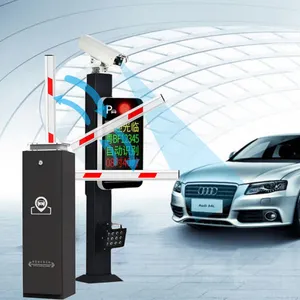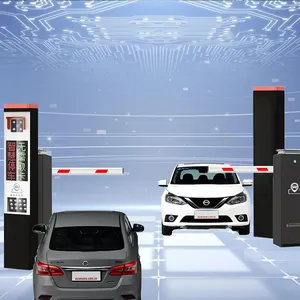
All categories
Featured selections
Trade Assurance
Buyer Central
Help Center
Get the app
Become a supplier

(5361 products available)




















































Mechanical car parking systems are an innovation that addresses the issue of limited space in urban areas. It is a technology that automatically parks and retrieves cars. It uses mechanical devices and requires little human interaction. The system comprises various types, each designed to cater to different parking needs.
Mechanical parking systems are usually specified in terms of parking capacity, space dimensions, height, and vehicle weight. Here are some key specifications:
Parking capacity:
The capacity of a mechanical parking system is determined by the number of parking spaces that can accommodate. The capacity may differ depending on the design and arrangement of the system. For instance, some systems can hold up to 500 cars, while some can accommodate more.
Parking space dimensions:
The dimensions of the parking area are essential for mechanical parking system specifications. Typically, parking spaces are approximately 2.4 meters wide and 4.8 meters long. However, the dimensions may differ based on the design and the type of vehicles being parked.
Height:
The height of a mechanical parking system is usually determined by the vertical clearance required for parking and moving vehicles. The height can vary depending on the design of the system. In most cases, the height ranges between 2.2 and 3 meters.
Vehicle weight:
Vehicle weight is an important specification because it can affect the mechanical parking system's performance. Consequently, the mechanical car parking system is designed to accommodate vehicles weighing up to 2,500 kg. Nevertheless, the weight limit might differ based on the design and engineering capabilities.
It is important to maintain the mechanical car parking system so that it can function effectively and efficiently. Here are some maintenance tips:
Regular inspections:
Inspections are essential to identify and address potential issues before they become serious problems that can affect the system's performance and safety. The inspections should focus on all components of the mechanical parking system. For example, they should focus on the lifts, conveyors, and support structures. In addition, the inspections should check for signs of wear or damage and address them immediately.
Cleaning:
Cleaning the mechanical car parking system is important to remove dirt, dust, and debris that can affect its performance and safety. The cleaning should focus on all components of the system, such as the lifts, conveyors, and parking spaces. Cleaning should be regularly scheduled and carried out using appropriate cleaning agents and tools.
Lubrication:
Regular lubrication is important to reduce friction and wear between moving parts of the mechanical parking system. The lubrication should focus on all components of the system, like the lifts, conveyors, and parking mechanisms. The appropriate lubricants and intervals should be used based on the manufacturer's recommendations and the system's needs.
Replace worn parts:
The replacing of worn parts is necessary to maintain the mechanical car parking system's performance and safety. The worn parts may include belts, rollers, bearings, and other components of the system. The replacement should be done based on regular inspections and the manufacturer's recommendations.
Choosing the proper mechanical car parking system can be a challenging task. Here are some factors that should be considered before choosing a parking system:
Space availability:
Space availability is one of the major factors to consider. The parking lot should have enough space for the parking system to be installed. The area is not only the physical space but also the space for the system's operation.
Type of parking system:
There are many types of mechanical car parking systems, and each type is designed for a specific need. Choose the type that will meet the exact requirements. For example, if a high-density parking space is needed, then a vertical lift system would be an ideal choice.
Capacity:
The capacity of the system is another important factor to consider. The system chosen should accommodate the number of cars that are expected to be parked. If the capacity is too low, it will lead to congestion. On the other hand, if the system capacity is too high, it will result in underutilization.
Safety:
Safety is another important consideration. The system should have safety features to prevent accidents and damage to cars. Also, consider the safety of the users. The system should be safe and easy to use.
Cost:
Cost is another major factor to consider. The initial cost of installation, maintenance cost, and the operational cost should be considered. Choose a system that is within the budget but also meets the required needs.
Environmental impact:
Consider the impact of the system on the environment. Choose a system that is environmentally friendly and has a low carbon footprint.
Future expansion:
Consider the future expansion needs. Choose a system that can be easily expanded or adapted to meet future requirements.
Below are the steps to DIY and replace mechanical car parking systems:
Identify the issue
This involves understanding what is wrong with the mechanical car parking system. Is it a wear-and-tear issue that is common with old parking systems or a minor mechanical failure?
Gather necessary tools and safety measures
Some of the tools required for maintaining and repairing mechanical parking systems are wrenches, screwdrivers, and safety gear like gloves and glasses.
Disassembly
This involves carefully taking apart the affected section of the parking system. For instance, if the issue is with the parking lift, the lift's platform and support columns can be disassembled.
Inspect and Replace
Once the mechanical parking system is disassembled, it is easy to inspect and identify the worn-out parts. After identifying the parts, it is now easy to replace them.
Reassemble and Test
After replacing the parts, the system is reassembled to ensure it functions well. Before doing this, the parking system is tested to ensure it is safe.
Q1: How Safe Are Mechanical Car Parking Systems?
A1: Generally, these parking systems are safe. They have emergency stop buttons, safety sensors, and light signals. They also have safety features that prevent accidents or damage to cars. It's important to follow the instructions to ensure safety.
Q2: Can Large SUVs or Trucks Fit in a Mechanical Car Parking System?
A2: Each parking system has size limits. It's important to check the dimensions of the parking system and compare them with the size of the car before parking. If the car is too large, it may not fit in the system.
Q3: What Happens if a Mechanical Car Parking System Fails?
A3: The systems are designed to handle such situations. They have emergency procedures that allow cars to be removed even if the system fails. Trained staff can help with emergency situations and ensure cars are retrieved safely.
Q4: Is Maintenance Required for Mechanical Car Parking Systems?
A4: Yes, regular maintenance is important to keep the parking system working well. Trained technicians check and take care of the system parts regularly. They clean, lubricate, and fix any issues to prevent problems and ensure smooth operation.
Q5: Can Any Type of Car Be Parked in a Mechanical Car Parking System?
A5: Most standard-sized cars can be parked in these systems. However, cars that have unusual shapes or are very big or small may not be suitable. It's best to check with the parking system's rules to see if the car can be accommodated.